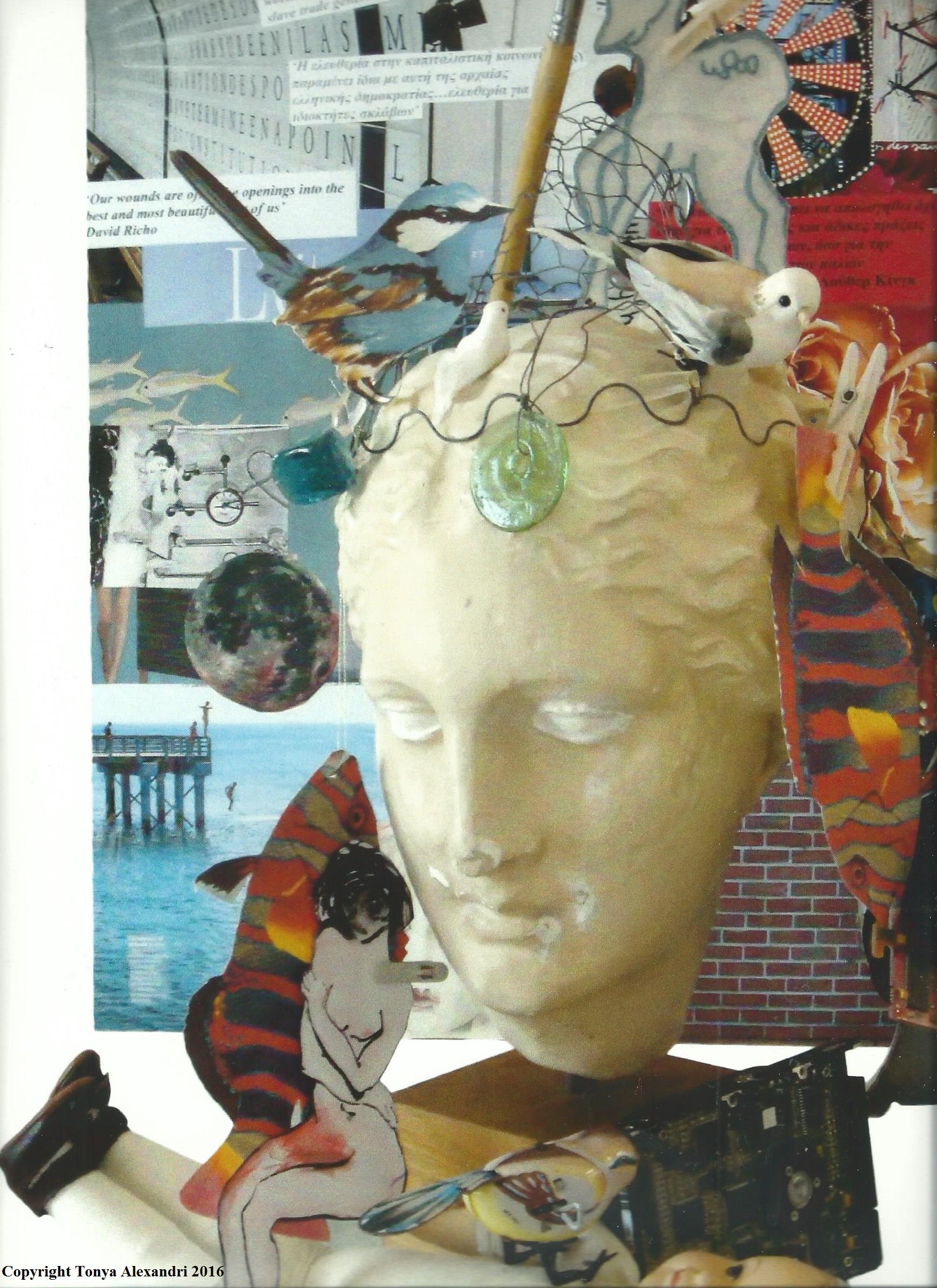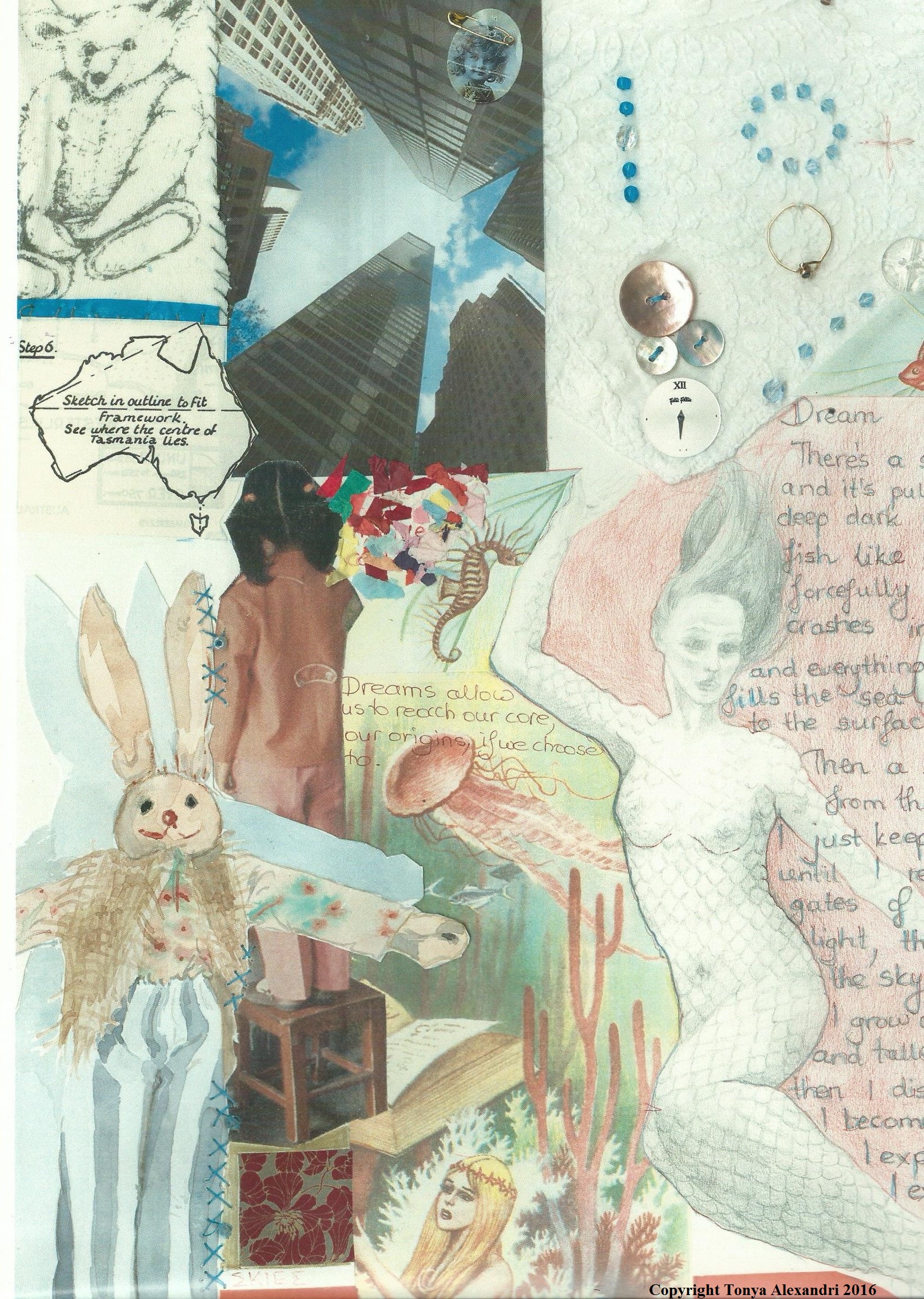A few thoughts….
As I mentioned a few days ago I just finished reading Harriet Wadeson’s book which includes her written and visual journal of her battle against cancer and the life readjustments she had to make. While reading her book and looking at her artwork of crabs and other images, I was reminded of my 2004 surgery. I did not undergo something as serious or life-threatening as the writer, but still the experience echoed in my artwork both immediately after the surgery procedure, and also in the artwork I produced later. Some of this artwork became posters displayed in the street a couple of years ago and some is displayed in the Artwork section of this site. Today I have posted just a few samples – parts of artwork pages – that deal with experiences of discomfort and pain or are relevant to health.
Briefly, in 2004 I underwent a laparoscopy procedure, in order to remove uterine fibroids, which according to my doctor was a preventive, simple and painless procedure. He had told me that I would definitely not need to stay overnight for such a simple procedure and actually told my husband that he could treat me with an expensive meal of seafood after I had rested for a few hours. However, after remaining in the OR for several hours it was decided that I needed to remain at the clinic overnight because I seemed exhausted and weak and as pale as a wax doll as he had told me. My doctor was so concerned that he phoned me during the night to make sure I was OK and suggested I eat some custard cream to regain strength. The worst part was that the first few weeks after the surgery I suffered constant high levels of pain and at times could hardly find the strength to eat or visit the bathroom. I felt that I had returned from a war zone or as if I had been hit by a truck. Imaginary sea creatures, sea animals and fish started appearing in my artwork and dreams as I embarked on a period of intense bodily discomfort and inexplicable pains and aches all over.
Also, I have posted two samples of artwork that contain Hans Christian Andersen story symbols and images, which shows that our bodily, mental and environmental experiences are intertwined and inseparable. Mental processes, influences from our environment and bodily experience are all part of a larger whole, and they often find their way into our art and writing. Dan Siegel talks about the triangle of well-being where the brain, the mind and our relationships with others in our environment are interdependent. My psychology studies at the Open University were also informed by the very obvious – it would seem – approach that our body (including our embodied brain!), mind and our natural and social context are all interrelated and that naturally all our experience is embedded in some context. We are embedded and related with others in ways we may not even imagine. Christakis claims that ‘first of all, we are not solitary creatures and second of all, we are deeply embedded in the lives of others. It’s very easy to forget that and to engage in an atomistic fallacy – where we think that all we have to do is study the individual components of a system in order to understand the system’.
Finally, from a phenomenological approach it is suggested that as we go about our daily activities we are not conscious of our bodies and we usually take them for granted until we become ill. Sartre claims that ‘our bodies are passed in silence’ (1969, cited in Finlay and Langdridge, 2007). Max van Manen suggests that this unity of the pre-reflectively lived body is lost when one becomes ill and Toombs suggests that illness produces a shift of attention (1990; 1993, cited in Finlay and Langdridge, 2007). Finlay explores these ideas in great depth in her case illustration of a woman (Anne), who is suffering from multiple sclerosis (2006, cited in Finlay and Langdridge, 2007). Anne’s self-body and world unity is disrupted; her bodily intentionality is thwarted; she experiences feelings of body alienation and becomes acutely aware of her embodiment for she has lost her pre-reflectively lived body’ (you can read more in the essay on PTSD based on the film the Horse Whisperer, posted yesterday).
In any case, practicing mindfulness can increases our awareness of our bodily experience in the present. With time and practice we can develop ‘interoception’, a term used by Dan Siegel, which means perceiving within and gaining access to our body’s wisdom. For instance, by doing a body scan exercise we can become aware of the interior of our body and then use our mind to both heal and understand our body and ultimately improve our health and functioning, which can lead to an increased sense of well-being.
Tonya Alexandri, February, 2016
References
Christakis A. Nicholas, Connected: The Surprising Power of Our Social Networks and How They Shape Our Lives
Finlay, L. and D. Langdridge (2007) ‘Embodiment’, in W. Hollway, H. Lucey and A. Phoenix (eds) Social Psychology Matters, Milton Keynes, Open University Press.
Siegel, D. (2010), Mindsight: The New Science of Personal Transformation, Norton Series, the USA


